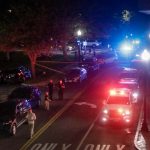The United States is not as protected against bioterrorism and nuclear disaster as citizens may think, a panel of experts said yesterday at Faneuil Hall.
Event moderator John Loretz, program director of International Physicians for the Prevention of Nuclear War, said public safety has improved very little, if at all, since the tragic events of Sept. 11.
Dr. David Ozonoff, a Boston University School of Public Health professor, said the U.S. Department of Public Health and Safety has failed to keep the public informed about anthrax. As for the Massachusetts Department of Public Safety and Health, he said a survey on the number of available hospital beds had not been taken in over 15 years.
Ozonoff said the public safety problems surrounding terrorism are “not going to be fixed just by throwing billions of dollars toward it.”
He also emphasized public service by praising the efforts of citizens nationwide in helping the victims of the Sept. 11 attacks.
SPH professor Richard Clapp emphasized the effects of nuclear fallout, describing an incident in Russia concerning an experiment in which a potassium-iodide vaccination worked for Polish residents living within the fallout area.
“What we saw after Chernobyl was a skyrocketing of childhood thyroid cancer,” he said. “The only solution to this problem is to phase out nuclear power plants.”
“We are thirty minutes away from the destruction of the U.S. as an entity,” said Dr. Lachlan Forrow of Harvard Medical School, who made reference to nuclear power plants in Seabrook, New Hampshire, and Cape Cod.
Forrow remarked on the danger of fuel tanks existing in above-ground pools at some U.S. power plants, saying they are easy targets for terrorist attacks.
“This problem will not be solved by panelists or one person in the White House,” Forrow said. “It will be solved by the spirit of the people who built this building.”
Jeanne Guillemin, an MIT professor and anthrax expert, said most people do not realize the extent of difference between bioterrorism and biological weapons.
“Bioterrorism are brush fires; biological weapons are forest fires and firestorms,” she said.
She said that bioterrorism had only been a collection of prospective scenarios until the anthrax attacks, adding the facts surrounding biological weaponry have been kept from the public.
“What was happening was that the military was holding onto the secrets of anthrax,” Guillemin said.
Dr. Ruth Barron of Harvard Vanguard Medical Associates focused on the psychological trauma caused by terrorism. She referred to the shell shock of World War I veterans and of the discovery of Post Traumatic Stress disorder as a result of combat.
Barron discussed the symptoms of traumatic attacks and the need for social support and information to help recovering victims.
“It is the disaster that is abnormal, not the individual,” said Barron.
Green Party gubernatorial candidate Jill Stein, however, told the audience the nation has many other things to worry about besides terrorist attacks. She said the bioterrorism threat should be put in context, referring to statistics showing terrorism was not one of the top ten leading global threats to public health.
Stein agreed, however, that nuclear power plants pose a serious threat to a large number of Americans.
“These are time bombs ready to go off,” she said of the 700 sites nationally that would each affect more than 100,000 citizens if targeted by terrorists.
Many of the speakers remarked on how public service has skyrocketed since the attacks on the U.S.
This is an account occasionally used by the Daily Free Press editors to post archived posts from previous iterations of the site or otherwise for special circumstance publications. See authorship info on the byline at the top of the page.



